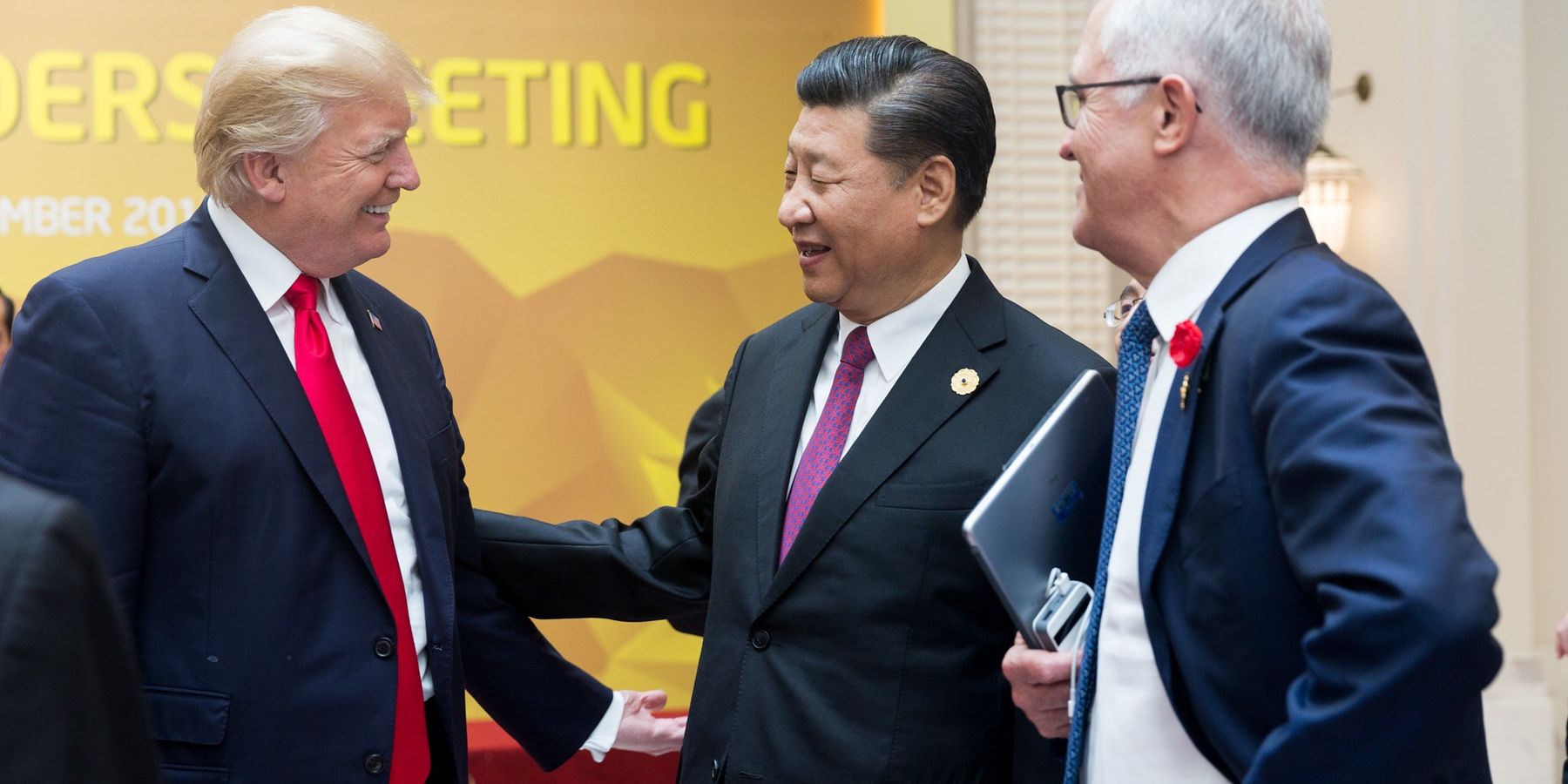Only one month in, the foreign policy moves of the Trump Administration in Europe, the Middle East, and North America indicate that radical, tumultuous change, marked most notably by major reversals in long-standing U.S. stances, could be the norm over at least the next four years.
Following Trump’s threats to seize the Panama Canal and Greenland and absorb Canada, along with his apparent support for Russia over Ukraine and his bizarre offer to turn Gaza into the Riviera of the Middle East by removing the Palestinian population, one might ask what is in store for Asia, and China in particular.
Thus far, Trump has said relatively little about the region other than to predictably threaten tariffs against China and others while offering the prospect of welcoming some forms of Chinese investment into the United States and dissing Taiwan. However, this is unlikely to remain the case.
In the broadest sense, there is little doubt that the Trump regime will continue the “strategic competition” theme with China that was established during the first term and carried through the Biden Administration while pressuring Asian allies to spend more on defense and buy more American goods.
But a real question exists as to how deeply and widely Trump will confront China (and support U.S. allies) and, in doing so reflect the hardline attitude toward Beijing now dominant in Washington.
Much of the U.S. attention to China thus far has been focused on “beating” the Chinese in competition while merely “keeping the lines of communication open” to avoid conflict. Substantive cooperation in areas of common interest, or the search for mutually beneficial agreements or understandings, have by and large been a mere after-thought, a lesser objective, nice to have, but by no means essential.
The second Trump regime presents some uncertainties in assessing the continuity of such views. U.S. officials such as Defense Secretary Peter Hegseth, Secretary of State Marco Rubio, and National Security Council Director Mike Waltz have made very hawkish statements about China and the need for the U.S. to focus most of its attention on countering Beijing in a zero-sum manner on all fronts, and especially in Asia. But there is a real question as to just how adversarial the Trump regime will be for several reasons.
First and foremost, as has become abundantly clear over the past month, Donald Trump and Elon Musk, not national security officials, exercise dominant power over both the domestic and foreign policies of the United States and thus have the ultimate word on how to approach China and Asia more broadly. Yet neither figure is terribly interested in geostrategic competition writ large.
Some observers believe that, based on his recent actions, Trump is most focused on establishing a clear sphere of influence for the United States in the Americas while leaving Europe largely to the Europeans and Asia to the Asians. This is too extreme and overlooks the more significant features of Trump’s supposed worldview: a) narrowly transactional approaches designed to achieve specific economic benefits, b) a desire to increase the overall influence of the U.S. without wasting resources on overseas military ventures, and c) defending against actions that make him look weak.
Indeed, on the last point, Trump believes that many countries, including close allies, have taken advantage of the U.S. and is thus focused on correcting this. Elon Musk follows Trump’s lead in all this, no doubt. Still, he has strong financial interests in China and elsewhere, including his massive Tesla car and battery production facilities near Shanghai that obviously raise questions as to how confrontational, or broadly strategic, he might be, especially toward Beijing.
In fact, Trump’s statements and actions suggest that he does not think in terms of multipolar or unipolar worlds, or even American primacy or subordination in global power terms, and certainly not as a means of advancing the so-called liberal international order. Trump has shown little interest in advancing American values overseas or anywhere else and expresses great admiration for strong rulers unconstrained by legal or political factors. So far, his focus is on ending wars through economically lucrative deals and building up overall American economic strength via tariffs and trade agreements.
In Asia, even dangerous and complex issues such as Taiwan are potentially subject to Trump’s transactional approach. So far he has not shown any overt interest in the longstanding U.S. support for Taiwan’s security and prosperity. To the contrary, he has castigated the Taiwanese for taking advantage of the U.S. in the tech arena.
This has raised concerns in some quarters that Trump will try to strike a deal with Beijing regarding Taiwan that exposes the island to greater Chinese coercion and a possible direct use of force. Despite his past support for arming Taiwan, this could take the form of a drastic reduction in military grants or even sales to the island or direct efforts to compel Taipei to open political talks with Beijing. (Though on Thursday, reports said the Trump administration had just released over $870 million worth of frozen U.S. security assistance to Taiwan).
So, how much support Trump might give to the more extreme, hawkish, geostrategic views in his government is very unclear. He will likely attempt to strike politically and economically beneficial deals with his “friend” Xi Jinping and downplay the geostrategic differences between Washington and Beijing while largely ignoring Chinese human rights abuses, for example.
But if he thinks Xi is taking advantage of him or successfully resisting any demands he might make, he could also become very confrontational and even reckless. Given his financial interests, it is unclear whether and how Elon Musk might resist any sharp shift against Beijing.
All this suggests that Trump will likely use his China hawks as needed to advance his own goals but not hesitate to ignore them if he thinks he can make substantial (primarily economic) gains in dealing with China. On the other hand, the hawks surrounding him could boost their influence on Trump by using Chinese actions that seem to make him look weak in order to sabotage a pending deal or heighten Trump’s desire for retribution against Beijing.
This could result in highly dangerous actions, including, for example, sudden, radical changes in U.S. policy toward Taiwan, such as the deployment of U.S. warships (or even combat forces) to the island, unprecedented backing for Taiwan’s status as an independent nation, or even support for Taiwan acquiring nuclear weapons.
Although unlikely at present, it is certainly not inconceivable that Trump could eventually opt for one or more such radical moves as part of a negotiating ploy or to repay Beijing for making him look weak or foolish. Any such moves, as well as the above opposite shifts toward abandoning Taiwan, could deeply alarm America’s Asian allies or cause Beijing to overreact in unpredictable ways, resulting in a serious crisis.
We are, therefore, entering a period of great uncertainty and potential instability for Asia and the world, driven by a fundamentally unpredictable president. In the best case, he could settle for making productive deals on all sides while dissuading provocative actions by Beijing or other Asian states.
But the more likely outcome, if his general track record thus far is any indication, is that he will see little inhibition to breaking with existing policies in potentially reckless ways, when he deems it necessary. Countering this will require caution and prudence, calculated concessions where they will influence Trump most, unambiguous cooperative resistance to his most direct challenges, and, of course, flattery on the part of both competitors and allies.
- 'America First' meets Greenland, Taiwan, and the Panama Canal ›
- Trump's China dilemma ›
- US-China trade war is on: Could it turn violent, and when? | Responsible Statecraft ›
- US-China trade war: Escalate to de-escalate to escalate? | Responsible Statecraft ›
- Want Greenland? It should be courted, not coerced | Responsible Statecraft ›
- Will Trump choose deal or discord with China | Responsible Statecraft ›
- What did the US and China just agree to exactly? | Responsible Statecraft ›
- Can Trump finally break with Biden's failed China policy? | Responsible Statecraft ›
















